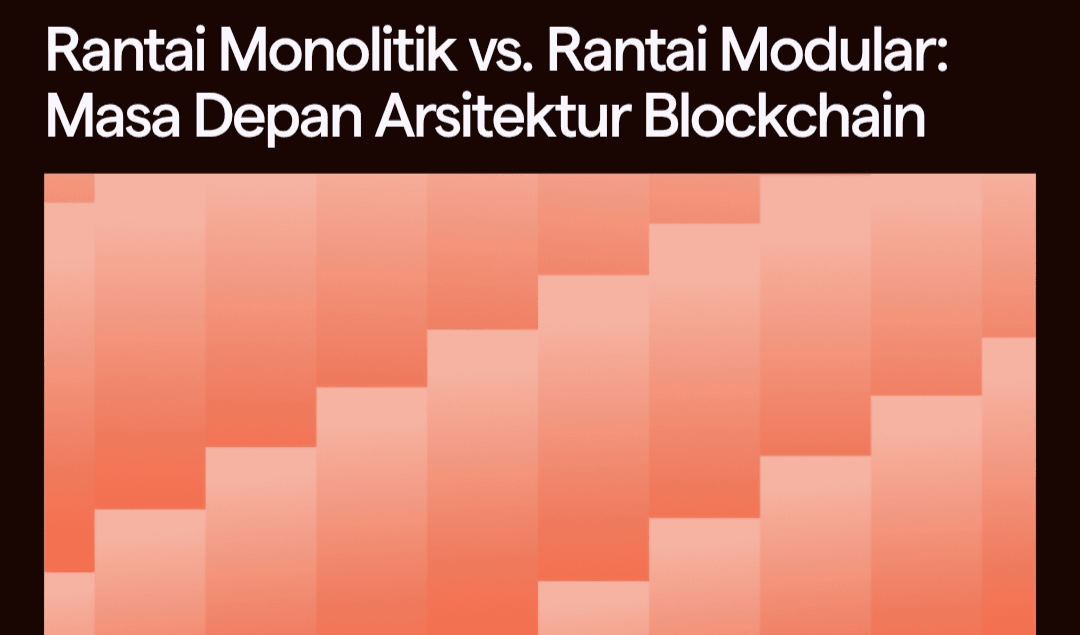
Blockchain technology has rapidly evolved since its emergence as a simple and versatile Bitcoin ledger. As the industry matures, developers face new challenges: scalability barriers, the need for flexibility, and increasing demands for decentralization. This evolution has sparked an architectural debate shaping the next generation of blockchains: monolithic vs. modular.
In this article, we will discuss what these terms mean, why the differences matter, and what each approach offers. We will also look at real-world examples and discuss the direction of industry development. Whether you are new to blockchain or delving into protocol design, understanding this debate is crucial to see how future chains may reshape a decentralized world.
What is a Monolithic Chain?
Monolithic chains are blockchains that run all core functions within a single integrated layer:
Consensus — agreeing on the order of transactions.
Execution — processing and updating the ledger state.
Data Availability — ensuring transaction data is accessible to all nodes.
Bitcoin and Ethereum (before upgrades like sharding) are classic examples. These blockchains handle everything internally, with tight integration and security goals.
Strength in Simplicity
The monolithic model serves as the foundation for first-generation blockchains. By combining consensus, execution, and data availability, these networks prioritize security and decentralization over speed. This design has proven resilient but difficult to scale: as more users join, throughput remains relatively low, and costs can rise dramatically.
What is a Modular Chain?
Modular blockchains take a different approach: they separate core functions into different specialized layers or chains. Modular blockchain architecture typically includes:
Base layer (Layer 1) that provides consensus and data availability.
One or more execution layers (Layer 2 or rollups) that process transactions.
Potentially other specialized layers for settlement, privacy, or governance.
This design emerged as developers realized that scalability and flexibility could be enhanced if each component could grow independently.
Ethereum's shift towards rollups, Celestia's focus on data availability, and projects like Cosmos and Polkadot reflect this trend.
Pros and Cons
Monolithic Chains
Advantages:
A simpler architecture makes it easier to understand and secure.
Strong security guarantees, as all functions are tightly integrated.
Reduces developer friction: a single environment for smart contracts and dApps.
Cons:
Harder to scale: limited throughput and higher costs during congestion.
Upgrades can be complicated and disruptive.
Limited flexibility to adopt experimental features.
Modular Chains
Advantages:
Potential for much higher scalability (e.g., thousands of transactions per second).
Flexibility: execution layers and rollups can adjust functionality.
Easier to innovate without risking the security of the entire network.
Cons:
Adds complexity in design and operation.
Interoperability risk: if communication between layers breaks down, issues can escalate.
Security is more distributed and relies on proper integration.
Examples and Use Cases in the Real World
Monolithic Chains in Action
Bitcoin: Handles consensus, execution, and data availability directly in a single-layer proof-of-work model.
Solana: Uses high throughput and low latency while maintaining a monolithic design, allowing it to process thousands of transactions per second, but with higher hardware requirements for validators.
Modular Chains Lead Innovation
Ethereum (post-rollup): The Ethereum mainnet focuses on consensus and data availability, while execution shifts to rollups like Arbitrum and Optimism.
Celestia: Only provides data availability and consensus, completely handing execution over to other chains.
Polkadot & Cosmos: Allow different chains to specialize while sharing security or communication protocols.
This shift allows dApp developers to choose the environment that best suits their needs, whether they want a high-speed trading platform, a private chain for enterprises, or large-scale DeFi applications.
Why is this Debate Important?
As blockchain moves towards mainstream adoption, the industry faces a trilemma: balancing scalability, security, and decentralization. Monolithic and modular approaches take different paths to resolve this:
Monolithic chains adhere to the ethos of the original blockchain: one chain, fully decentralized, highly secure — but its scalability is limited.
Modular chains aim for scalability by dividing tasks, at the cost of additional complexity.
For developers, this debate shapes design choices behind every dApp, protocol, or new Layer 2 network. For users, it impacts transaction costs, speed, and network reliability.
Future Prospects
We are unlikely to see one approach completely 'win.' Instead, the future may be an integrated ecosystem:
Large monolithic chains can act as settlement layers or base layers.
Modular execution environments handle specialized applications.
Interoperability protocols allow assets and data to flow freely across chains.
Research is also pushing new boundaries, such as broken monolithic chains (e.g., Ethereum's future plans) or recursive rollups (rollups built on top of other rollups), which blend the benefits of both models.
As technology evolves, chains can dynamically change roles: monolithic today, modular tomorrow, depending on network demand.
Conclusion
The debate between monolithic and modular chains reflects the evolving challenges and ambitions of the blockchain industry. Monolithic chains offer simplicity and strong security but face scalability limitations. Modular chains provide massive flexibility and scalability, albeit at the cost of complexity and potential interoperability risks.
At its core, this debate is not about which is better, but rather about what each approach enables. Monolithic chains demonstrate the potential of blockchain. Modular chains aim to make it mainstream.
Understanding this architecture is crucial for anyone building, investing, or simply curious about next-generation decentralized technology.



